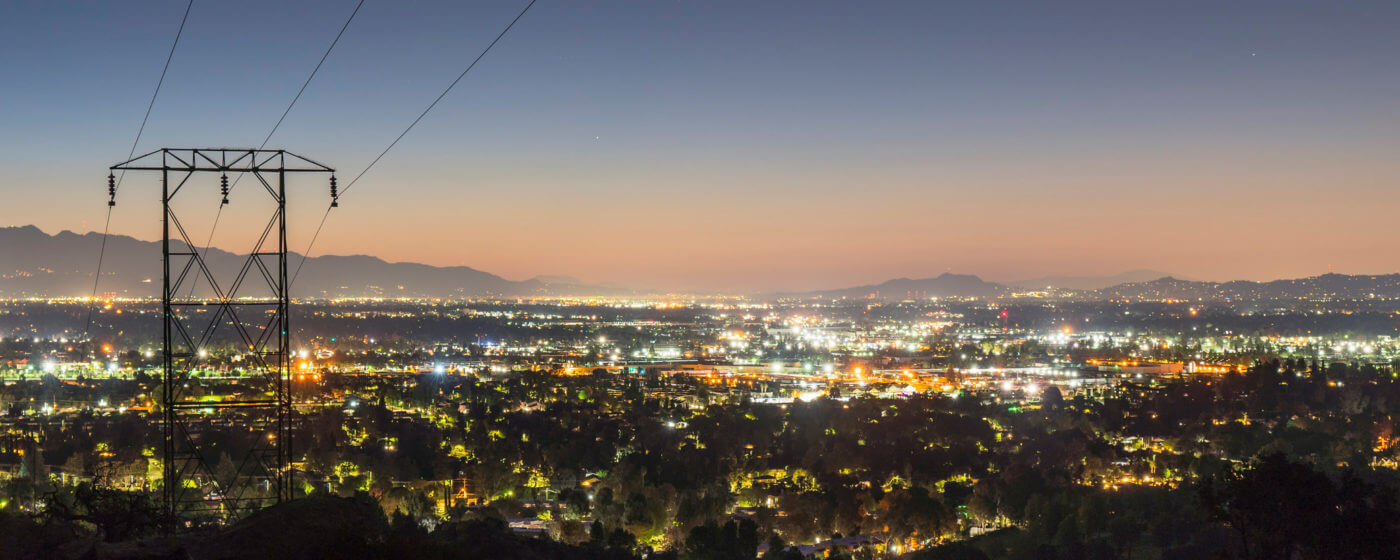
California’s climate goals are ambitious. A Clean Energy Deployment plan can help get it there.
While California has made many laudable strides in tackling climate change, it’s clear there’s much to do and little time to do it. The state is a leader in climate and clean energy policy with goals of 100% zero-carbon electricity sales and economy-wide net-zero greenhouse gas emissions by 2045. The California State Legislature raised the bar again in 2022, setting interim goals of 90% zero-carbon electricity sales by 2035 and 95% by 2040. In terms of time needed to plan and build major clean energy infrastructure, 2035 and 2045 are just around the corner and meeting its goals in this timeframe requires planning and action now.
Meeting California’s clean energy targets will require a rapid expansion of clean electricity generation capacity
The California Air Resources Board projects that meeting the state’s clean energy targets will require electricity generation capacity nearly four times larger than today’s. Five gigawatts (GW) of utility-scale solar must be built every year for the next 20 years, which is five times faster than today’s rate. And batteries capable of storing large quantities of clean electricity must be built several times faster than current rates.

If California is to achieve its clean energy targets while meeting the state’s energy demand, it must deploy a range of infrastructure projects much more quickly than it has in the past, especially as these projects can take longer than expected to build. Take the Topaz Solar Farm, for example. This is one of California’s – and the world’s – largest solar farms, and it took six years to construct and begin operating.
The state estimates it would need the equivalent of 180 similar projects to reach its 2045 goals of 100% zero-carbon electricity sales and economy-wide net-zero greenhouse gas emissions. More projects mean steeper competition for suitable land, more time investment to engage with local communities, and greater need for upgraded and new transmission lines. The longer it takes to get clean energy projects underway, the steeper the climb to reach net-zero emissions.

Growing the grid: California needs a comprehensive plan to chart its path forward toward a clean energy future
Transforming the energy system of the world’s fifth largest economy in the next two decades won’t be easy, but it’s essential. Californians deserve cleaner air, healthier communities, and good jobs that a move toward clean energy provides. California has risen to the challenge in the past and is well-positioned to do so now. This means developing and deploying diverse clean energy technologies as soon as possible – but how do we do it?
In a new report by CATF and Environmental Defense Fund, we identified the challenges California faces and outlined recommendations to facilitate the clean energy transition. In short, we advise what anyone would when tackling a task as monumental as building the interstate highway system, putting a man on the moon, or hosting Thanksgiving dinner: make a plan. The full list of recommendations include:
- Develop a Clean Energy Deployment Plan with specific quantities, locations, and timing of new resource development and infrastructure expansion that will help the state build all that it requires deliberately, affordably, and on time.
- Assign a lead agency the primary responsibility for achieving the state’s clean energy goals and give them authority to develop and implement the Clean Energy Deployment Plan. Achieving the physical foundation to achieve California’s climate goals is now spread among more than a dozen agencies. Such diffuse responsibility and overlapping jurisdictions are products of decades of well-intentioned efforts of policymakers solving the challenges of their time. Vesting a single entity with the authority to develop and implement the plan will help clarify who’s accountable for achieving the state’s ambitious goals.
- Develop a dashboard to publicly track progress toward milestones established in the Clean Energy Deployment Plan. Currently there’s no way to know whether the state is on track to achieve its climate and clean energy goals. There is plenty of information on how much clean energy is built annually, how many transmission lines are under development, the number of electric vehicles in the state, and more. But nobody inside the state government or out can say whether it’s enough. Transparency is vital to increase public trust, provide accountability, inform course corrections, and ensure private sector certainty.
- Engage the public to help shape where, when, and how clean energy infrastructure gets built. Building all the solar the state needs will require hundreds of thousands of acres across the state. And these projects are built in communities, each with different needs, values, and priorities. It is critical to aligning California’s clean energy transition with the needs of its people, thereby better informing a deployment plan and ensuring sustained public buy-in.
- Advance supportive policy that will address potential barriers to developing and deploying infrastructure projects under the plan and harmonize existing policies and programs with the Clean Energy Deployment Plan.
The challenges to clean such a broad and sustained transformation of energy infrastructure in the state are myriad, and if left unchecked could slow clean energy deployment. Some we know: permitting projects takes far longer than it should; clean energy infrastructure planning is too short-sighted; communities are not consulted enough about major projects in their neighborhoods. And there are many we don’t. And yet, we must proceed.

California’s climate leadership is commendable, and the state can continue to set an example for the rest of the world. The billions of dollars of financial support for clean energy made available by the Inflation Reduction Act, the largest federal climate action in history, create even more opportunity for progress. If past is prologue, there’s nothing stopping California from decades more climate leadership.
This blog was co-authored by Michael Colvin, Director, California Energy Program, at Environmental Defense Fund.




